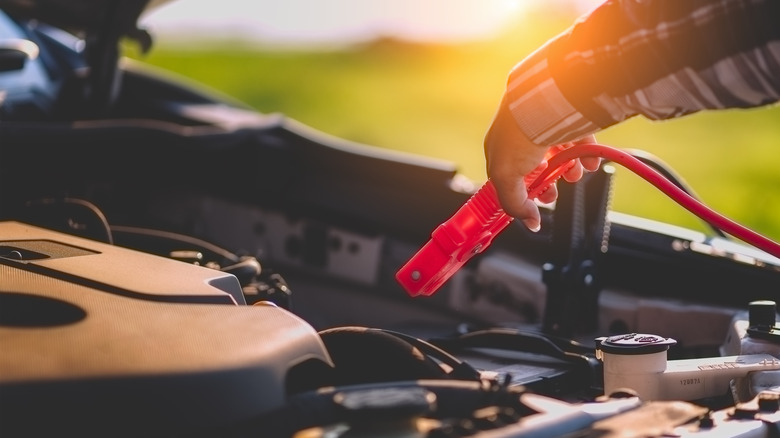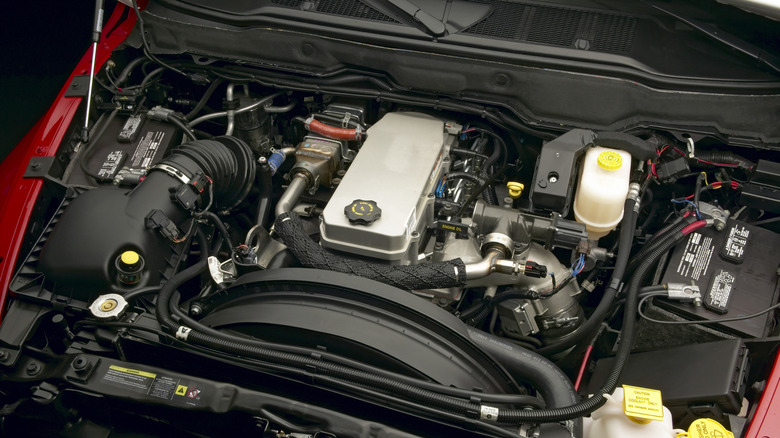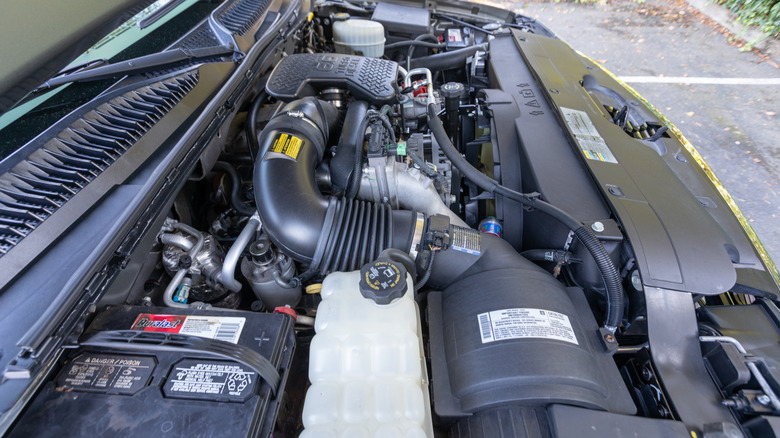Can You Jump Both Batteries On A Diesel Truck At The Same Time?
When choosing between diesel or gasoline-powered trucks, many prefer the former due to its superior towing power, higher torque, longer-lasting engine, and greater fuel efficiency than gasoline-fueled vehicles. However, most diesel trucks come with unique features, including a dual-battery setup. This design is necessary to deliver the cranking power required for starting their robust engines and supporting the vehicle's electrical system. While this dual-battery setup means double the power, it comes with its challenges — particularly when one or both batteries lose their charge.
The process of jump-starting a diesel truck, which has two batteries, is similar to that of any single-battery car, albeit with a few distinctions. For starters, is it even possible to safely jump-start both batteries at the same time, and what happens if you do? Technically, you can jump both batteries at the same time, but it's not recommended because the batteries are in parallel. This means that jumping both simultaneously could damage the truck's electrical system or even cause a fire.
As an experienced pickup truck owner, I've gained firsthand knowledge of the challenges through years of driving a Ford F-250. Over time, I've come across a few situations where a dead battery left me stranded. In many cases, battery failure could be due to the electrical system running too long without the engine. It also might simply be that one of the batteries has reached the end of its lifespan. Regardless of the cause, jump-starting the truck is often necessary.
Why diesel vehicles require two batteries
A diesel truck needs two batteries simply because a diesel engine needs more power to fire up compared to a typical gasoline engine. Two batteries, wired in parallel, give higher compression diesel engines the necessary amperage to turn over. Instead of relying on spark plugs to ignite fuel, diesel engines rely on compression to ignite fuel and make power, hence the need for more initial power in the form of an additional battery.
Optima, a maker of high-end automotive batteries, notes that given the often extreme workloads that diesel engines face, the batteries and starting system need to be robust enough to give enough "juice" whatever the outside conditions are. Manufacturers of diesel-powered trucks have decided that two beefy batteries wired together is the least complex way to accomplish that task.
Additionally, if you find yourself in a situation where only one battery is dead or otherwise not holding a charge, Optima says it's a good idea to change both batteries when you get the chance. You don't want the other one also failing on you.
Why jump-starting both batteries is not recommended
Although it is technically possible to jump both batteries simultaneously, the risks outweigh the benefits. For example, jump-starting both batteries on a diesel truck at the same time increases the chance of error. With two batteries receiving power, there are more points of connection, raising the likelihood of accidentally reversing polarity by connecting a positive terminal to a negative one. This can bring severe consequences, such as damaged electronics, which are particularly sensitive in modern vehicles. A voltage spike or reversed polarity could fry critical systems. In more extreme cases, a short circuit caused by incorrect connections can lead to a fire or even a battery explosion.
On top of that, jumping both batteries on a diesel truck offers no practical benefit. Since the batteries are wired in parallel, connecting to one battery is enough to transfer power to the entire system. Attempting to connect both adds unnecessary complexity without any improved results and increases the potential for confusion, especially for an inexperienced individual.
For most drivers, the safe, proper way to jump a battery on a diesel truck is to connect the jumper cables to one battery only, preferably the one closest to the starter. Make sure to keep the proper positive-to-positive and negative-to-negative connections. If you feel uncertain about the process, it wouldn't hurt to seek assistance from a professional mechanic.


